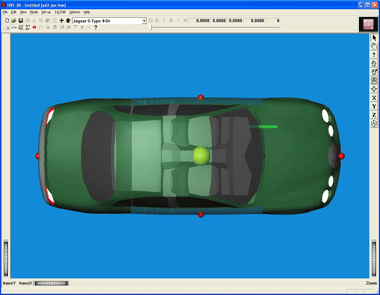![]() EDVDB-2D
EDVDB-2D
EDVDB-2D (Engineering Dynamics Vehicle Data Base-2D)
EDVDB™ is a comprehensive vehicle database developed by EDC for use with HVE-2D. Every vehicle in the database is complete with all the data necessary to perform a complex reconstruction or simulation. The use of EDVDB will improve results, increase productivity and save time. EDVDB currently contains several hundred unique vehicles and is continuously updated with new vehicles.

![]() EDVDB is a true hierarchical database. As such, vehicles are selected according to Type, Make, Model, Year and Body Style, as defined according to "SAE Paper No. 960897, Updating the Vehicle Class Categories".
EDVDB is a true hierarchical database. As such, vehicles are selected according to Type, Make, Model, Year and Body Style, as defined according to "SAE Paper No. 960897, Updating the Vehicle Class Categories".
The parameters for every vehicle in EDVDB are acquired by EDC engineers. Dimensions are obtained using a 3-D digitizer. Weights are obtained using platform scales at each wheel. Stiffness coefficients are obtained from leading industry sources, such as NHTSA. Other parameters, such as tire data, are derived from actual tests performed at Calspan, UMTRI and other research facilities. The source of every parameter is documented. An exhaustive review of each vehicle is performed before adding it to the database.
Using the Vehicle Editor, the required vehicles are selected from EDVDB according to the following criteria:
- Vehicle Type — Passenger Car, Pick-up, Sport-Utility, Van, Truck, Trailer, Dolly, Fixed or Moving Barrier.
- Make — Chevrolet, Dodge, Ford, Freightliner, Mazda, Nissan, Pontiac, Toyota, etc.
- Model — Lumina, Caravan, Taurus, FLD120, Miata, Sentra, Firebird, Corolla, etc.
- Year — Model years from 1968 through Present.
- Body Style — 4-door, 2-door, Coupe, Convertible, Long-nose Conventional, etc.
Once the vehicle is selected, HVE-2D loads its unique parameters and the vehicle is ready to be used in a reconstruction or simulation. The specific vehicle parameters are:
- General Group — Number of Axles, Driver Location, Engine Location, Drive Axle(s).
- Body Group — Inertias (mass, yaw moment), Suspension (roll couple distribution), Color, Inter-vehicle Connections (type, x,y and z location, moment radius and friction, maximum articulation), Stiffness (A, B, Kv for front, rear and sides).
- Dimensions Group — Overall Length, Front/Rear Overhang, CG to Front/Rear Axles, Front/Rear Axle Track Width, CG to Vehicle Exterior (front/rear/sides), and CG Height.
- Tire Group — Friction (peak mu, slide mu, slip at peak mu, cornering stiffness, slip vs. roll-off, velocity dependence), Single vs. Dual Tires, Inter-tandem Load Transfer Coefficient.
